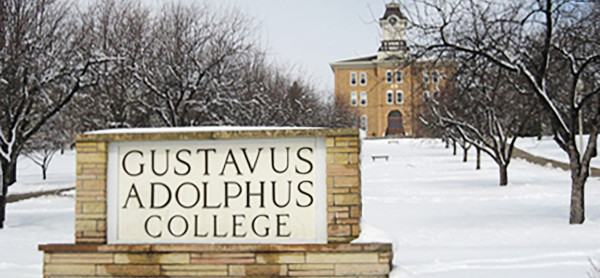Enrollment at Gustavus and liberal arts colleges across the nation has been falling over the past few years.
According to the article “Declining Enrollments, Financial Pressure Force Two Liberal Arts Colleges to Close” published in USA Today on March 3, this decline began during the financial crisis in the United States in 2008.
The article focused on the closings of Sweet Briar College and Tennessee Temple University scheduled this summer. Both colleges cited low enrollment and financial issues as the main reasons for closing.
Gustavus students are aware of the financial issues which can lead to lower enrollment, as they must deal with the financial burden themselves.
“Private liberal arts schools are not funded by the government, but rather by donations from alumni, which means that a lot of their income comes from the students themselves,” Junior Sociology and Anthropology major Michael Quinn said. “It’s hard to maintain a facility based on student’s payments because students don’t have an income.”
Even when students do have an income or are able to rely on the financial stability of their parents, they’re faced with a future of student loan debt.
“Our financial aid is based off our parents income, which is very diverse,” Quinn said. “And even then, a lot of us who can afford this with the help of scholarships are taking out large loans to take care of tuition, and we’ll be in debt until at least our mid-thirties.”
Based on the financial commitment required to attend a liberal arts college, some students may choose to attend public universities.
“I think that people don’t want to pay a lot for what they see as the same thing as a state school, which is less expensive and gives the same degree,” Senior Music and Scandinavian Studies major Erik Carlson said. “Why would you apply for a private school when you could get the same thing at a public school?”
However prominent the financial struggle may be for students at all universities, it’s a difficult problem to solve.
“It’s tough to say how to cut costs at private schools when it’s all funded by the college rather than the state,” Carlson said. “Tuition rises each year to help with finances, but this can be a deterrent for students who know that they wouldn’t have had to pay these increased rates in the past. For example, the senior class my freshman year was the last class to have tuition locked, so they payed the same all four years.”
The financial issues plaguing students as they plan their futures are on the radar of administration.
Dean of Students and Vice President for Student Life JoNes VanHecke offered a slightly different perspective regarding enrollment, which takes the population of available students into account.
“My understanding is that the number of kids graduating from high school in Minnesota is smaller. That number is decreasing, so there are fewer traditional age kids coming to college, although, that said, I know that it’s true in rural Minnesota, but I don’t know if it’s true in the Metro area,” VanHecke said.
With these rural outstate areas declining in population, the admissions office has adjusted the way in which they recruit new students.
“I know that our admissions office really prides themselves on different strategies and reaching out to people in different ways,” VanHecke said. “I think that, consistently, we’re really known as a place that’s really intentional about communicating person-to-person, because that’s the kind of place this is.”
Gustavus may be experiencing lower enrollment, but Admissions has been intentional about maintaining a sizable student population.
“Enrollment is a long range strategy, you have to be in the moment of where the next class is, but you also have to be thinking five and ten years out for where it is that you want to go and how you’re going to get there,” VanHecke said.
As Gustavus and other colleges work to deal with complicated financial pressures and enrollment issues, they take on a task that is far from cut and dry.
“What’s happening at one university at any one moment in time doesn’t tell the whole story. Some small Minnesota or Midwestern colleges are seeing declines in enrollment, but simultaneously, some are seeing increases in enrollment. There’s this complex ebb and flow in higher education that changes not just by population, but by things that are so much more complex,” VanHecke said.
-Kaity Young
